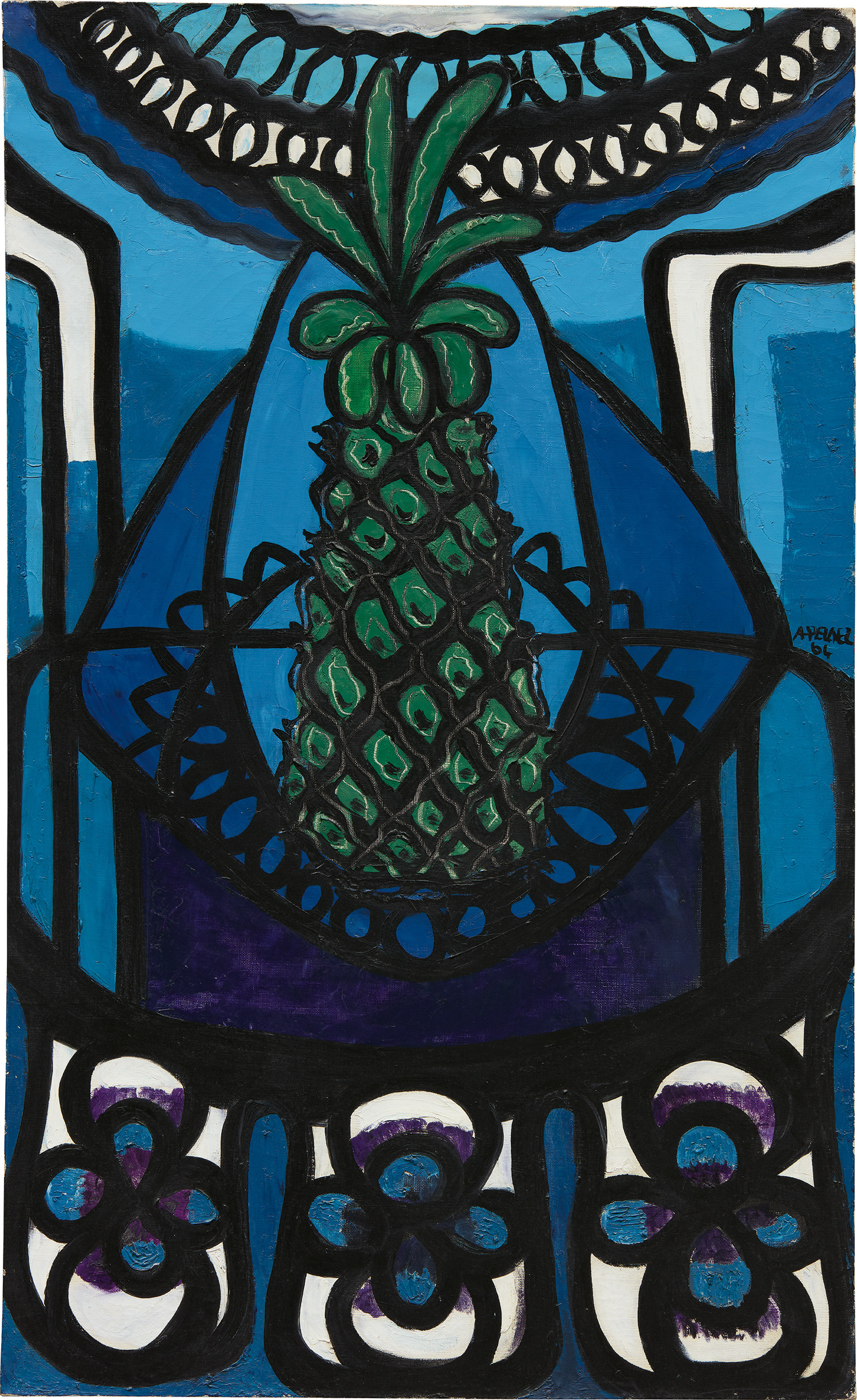

108
Amelia Peláez
Piña
Full-Cataloguing
As early as 1943, Peláez was included in The Museum of Modern Art’s growing Latin American art collection – her work notably gracing the front cover of the publication accompanying the 1944 exhibition Modern Cuban Painting. Not only was Peláez celebrated as one of the foremost Cuban painters, she notably was the only female artist included in this landmark show that introduced the new tendencies in art from Cuba to the New York art world. As Alfred H. Barr, Jr. wrote, “Modern Cuban painting…has something of the brashness, but even more the virtues of youth — courage, freshness, vitality, and a healthy disrespect for its elders in a country which is very old in tradition and very new in independence” (Alfred H. Barr, Jr., Modern Cuban Painting, Museum of Modern Art Bulletin, April 1944, vol. XI, no. 5, p. 1).
Alongside artists such as Wifredo Lam and Carlos Enríquez, Peláez belonged to the so-called “primera vanguardia,” referring to the first wave of Cuban artists who traveled abroad before World War II. Born in 1896 during Cuba’s final liberation war against Spain, Peláez studied painting in Havana before studying at the Arts Student League in New York in 1924, and then moving to Paris in 1927. She notably enrolled in Fernand Léger’s Académie Moderne where she studied under Alexandra Exter – a painter who would not only introduce Peláez to modernism, but importantly had a strong impact on her sense of self as a professional female artist. Exposed to Cubism and Surrealism, Peláez developed a highly distinct painterly style, and garnered critical recognition which led to her first solo show in Paris at the Galerie ZAK in 1933. Flores, 1930, was notably one of the paintings included in this celebrated exhibition. An important early painting by Peláez, Flores perfectly encapsulates the idiom she developed in Paris at the cusp of her international success.
It was in the wake of her success in Paris that Peláez returned to Cuba in 1934 and became a vital member of the Cuban avant-garde movement (“the vanguardia”). At a time of economic and political uncertainty, the vanguardia tapped into the notion of nationalism through their modern art: taking the innovations they learnt in Europe as a formal point of departure, they incorporated aspects from their native culture to create a uniquely “Cuban” style of modern painting. Painted in 1964, just four years before Peláez’s death, Piña vividly exemplifies the signature idiom she developed in Cuba. While embracing a progressive stylistic approach, Peláez focused on the colonial past of Cuba – specifically zooming in on the domestic experience. Her brightly colored, quasi-abstraction compositions merge decorative objects and ornamental motifs, evoking a cultural heritage that was slowly being lost at a time of rapid modernization in the first half of the 20th century. Exploring notions of heritage but also the transformation of societal roles, Peláez’s work addresses the tensions between tradition and modernity, past and present, in a powerful way that continues to resonate in today’s day and age.
Amelia Peláez
Cuban | B. 1896 D. 1968Amelia Peláez, one of the most prominent Cuban avant-garde artists, studied at the Academia de San Alejandro in Havana. She was part of the first wave of Cuban artists living in Europe before World War II. In Paris, she witnessed the development of Cubism as well as other European art movements that would later inform her complex personal aesthetic of simplified forms and bold colors.
With the decline of the sugar boom, Peláez returned to Cuba and laid the foundation for Cuban modernism by introducing artistic innovations. Her mature works are composed of brightly hued, quasi-abstract compositions that often depict unique domestic and architectural settings. Peláez was undeniably inspired by her surroundings in Cuba, where she continued to live until her death.